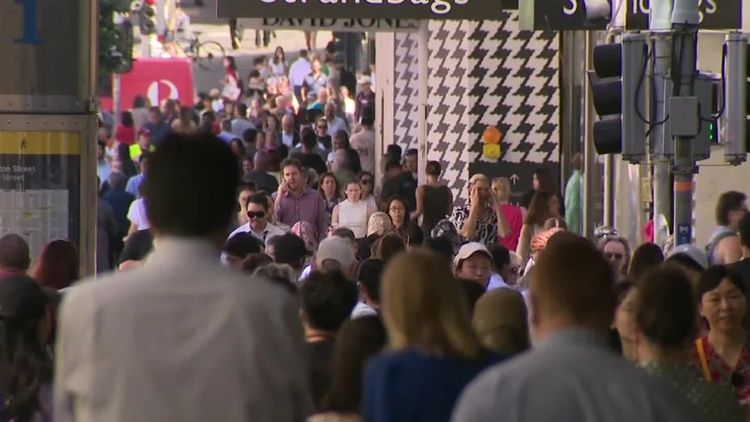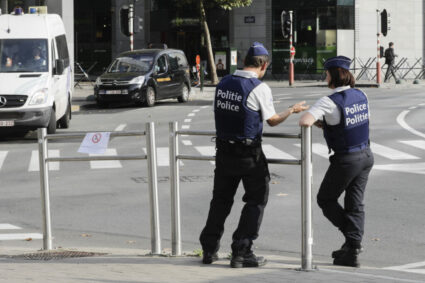
Pensioners and other welfare recipients are set to receive a payment boost from this year’s federal budget thanks to a number of cost-of-living relief packages.
While Treasurer Jim Chalmers won’t unveil the budget until Tuesday, he’s indicated the payment increases are on the table – although the exact details haven’t been unveiled.
Chalmers has otherwise tried to temper expectations, warning “there will not be big cash splashes in the budget, simple as that”, but there are still some significant policies aimed at alleviating hip pocket pressures on the way.
Some, like stage 3 tax cuts and student debt relief, have already been announced, while the government has hinted at others without providing many details. This is what you can expect in the federal budget – and how much you can expect to benefit from those plans.
READ MORE: Almost $3 billion of student debt to be wiped in federal budget
Welfare support increases
Australians on welfare will receive some kind of a boost to their payments, with pensioners one of three groups earmarked by the treasurer.
A week from budget day, Chalmers was asked about the timing of a potential increase to the JobSeeker rate, which was recommended by the Economic Inclusion Advisory Committee (EIAC).
“There will be additional steps in this budget which are conscious of the recommendations that that important, well-regarded, well-informed committee, has put to us,” Chalmers said.
Later in the week, on Friday, he was more specific.
“There’ll be additional help for people on pensions and payments and fixed incomes, and there’ll be additional help for people who are doing it tough,” he said.
“And the details of that will be provided on Tuesday.”
What that additional help will be is a bit of a mystery. It could be a JobSeeker raise – the EIAC called for it to be bumped up to 90 per cent of the aged pension.
That would see it jump from the current $762.70 per fortnight for single people up to $1004.67 – a rise of $121 per week or about $17 per day.
As of March last year, 740,800 Australians were receiving JobSeeker payments, while there are about 2.6 million people on the age pension.
But the EIAC made 21 other recommendations, including an increase to rent assistance payments, investing in social and affordable housing for Indigenous people, and overhauling the employment services system.
What it won’t be is a baby bonus. While Chalmers has said he would like to see Australia’s birth rate increase, he has ruled out a Howard-era-style payment for new parents.
READ MORE: Welfare boost set to be included in next week’s budget
Student debt relief and placement support
Both Prime Minister Anthony Albanese and Chalmers had flagged cost-of-living relief for students well in advance of the budget, and two policies have since been announced, with more likely to come on May 14.
Announced on May 6 was Commonwealth Prac Payment – a support payment for teaching, nursing, midwifery and social worker students doing workplace placements for their degrees.
It will provide $319.50 per week to students during their clinical and professional placements in an attempt to combat “placement poverty”.
It will be means tested, with the government expecting it to be paid to around 73,000 students, although it won’t come into effect for more than a year – it’ll first be available on July 1, 2025.
READ MORE: PM unveils $925 million fund for domestic violence survivors
The other measure is far more wide-ranging: changing the way HECS-HELP debt is indexed.
Student debt has previously risen in line with inflation every year on June 1.
That will now change, with debts to instead be indexed to whichever is lower out of inflation or the wage price index.
The move was recommended by the Australian Universities Accord review, and means students aren’t faced with a debt that’s increasing faster than their earning power through no fault of their own.
It will also be backdated to June 1, 2023, so everyone who was hit by the record 7.1 per cent increase thanks to high inflation will see their debt reduced, with 3.2 per cent indexation applied.
It will also reduce this year’s projected hike which, instead of coming in at 4.7 per cent, will now be 4 per cent.
READ MORE: Calls to improve housing affordability, save billions in one move
The government says the move will provide about $3 billion in relief to the more than 3 million people who have student debt.
We also know there will be further changes to higher education included in the budget, with Education Minister Jason Clare flagging more responses to the Universities Accord to be unveiled on May 14.
What that will actually be, we don’t know.
The review made 47 different recommendations, ranging from establishing a $10 billion future fund to invest in the sector, to changing the university funding model, and increasing the number of fee-free places.
READ MORE: Federal government commits $160m to establish national firearms register
Stage 3 tax cuts
The government’s signature tax policy will form a key part of this year’s budget.
Announced in January and passed by parliament the next month, the policy reworks the former government’s stage 3 tax cuts to direct more of the benefit towards low- and middle-income earners – although Australians on high salaries will still receive a tax cut.
Done to alleviate cost-of-living pressures, as well as to at least partly address bracket creep, the cuts lower the tax rate for the lowest two brackets (so we’re all paying less tax on that income), and raise the threshold for the two highest brackets (so you need to earn more to be taxed at those higher rates.
READ MORE: Defence spending gets $50 billion boost over next decade
This is slightly different to the original stage 3 tax cuts under the Morrison government, which would not have lowered the tax rate for those first two brackets.
They would also have abolished the 37 per cent bracket and raised the threshold for the top bracket to $200,001.
The new version of stage 3, which comes into effect on July 1, will see every taxpayer get a cut.
Someone on the average income of around $73,000 will get $1504, but exactly how much you’ll get depends on how much you earn:
The cost to the budget of the policy is estimated to be about the same as the previous iteration of stage 3: $105.7 billion by 2027–28.
Chalmers said there would also be tax reform beyond the stage 3 cuts.
“There’ll be some other tax changes as well,” he told ABC radio.
“In all of the budgets we’ve done so far, there has been modest but meaningful tax reform… people should expect to see more of that on Tuesday.”
Those exact measures haven’t been announced, but Chalmers ruled out changes to the housing sector such as negative gearing, instead saying they would be tied to the Future Made in Australia program, suggesting a focus on business and investment.
READ MORE: The opposition wants ‘mature debate’ about nuclear. This is what experts say
Superannuation on paid parental leave
Under another policy that’s already been announced, superannuation will be paid on government-funded parental leave.
While it will help address the 25 per cent less super that women have, on average, compared to men, it won’t make a difference this year – the policy is due to come into effect on July 1, 2025.
As for how much it’ll cost, we don’t know that either. A figure will be included in the budget on May 14.
READ MORE: Security guards to double at Centrelink after stabbing
Energy bill relief
Much like with student debt, there have been some hints from the government that energy bill relief will continue in this year’s budget.
On April 4, Albanese touted an existing policy, introduced in the 2023-24 budget, that gives eligible families up to $500 off their power bills and eligible small businesses up to $650.
“Our government understands that for small business – as for Australian families – energy bills remain a source of financial pressure,” he said.
“That’s why the energy bill relief package I negotiated with the states and territories delivered up to $650 in savings for around 1 million small businesses, along with 5 million families.
“And as we put together next month’s budget, small businesses and families will again be front and centre in our thinking.”
Energy bills are actually set to go down, or at least stay fairly stable, for much of the country from July 1 – a far cry from last year’s big hikes.
But Albanese’s comments indicate the current energy bill relief could be extended for another year.
READ MORE: How Australia brewed the perfect storm to put craft beer out of business
Anti-domestic violence measures
Just under two weeks before the budget, the government announced $925 million in funding for payments to support people fleeing abusive relationships amid nationwide outrage about the spate of violence against women.
Those escaping violence will be eligible to receive up to $5000 in financial support, along with access to safety assessments and referrals to support pathways, as of July 1, 2025.
The government also announced $6.5 million for a trial of online age verification technology to stop young people from viewing inappropriate material, including pornography and violence, to combat the spread of toxic attitudes towards women.
READ MORE: Single mum’s $200 bill shock in cost-of-living crisis
Finance Minister Katy Gallagher, who is also the federal minister for women, flagged there could be more announcements included in the budget, while also pointing to its national plan, which was established in 2022.
“We’re committed to the national plan, that sets out our overarching goal to end violence against women and children in a generation,” she said.
“It has already got $2.3 billion attached to that plan. We are making additional investments to that, you’ll see some of that in the budget.”




















